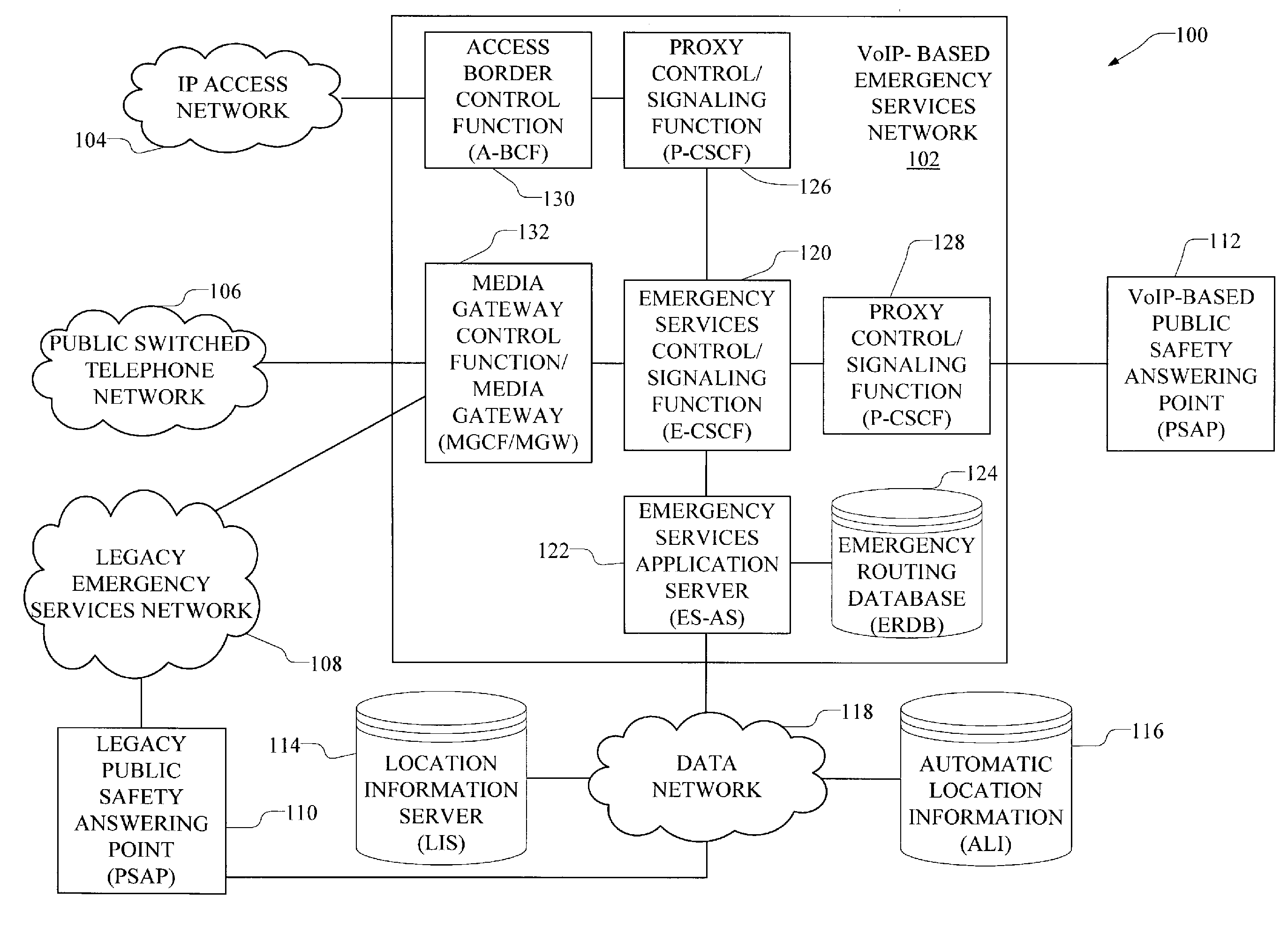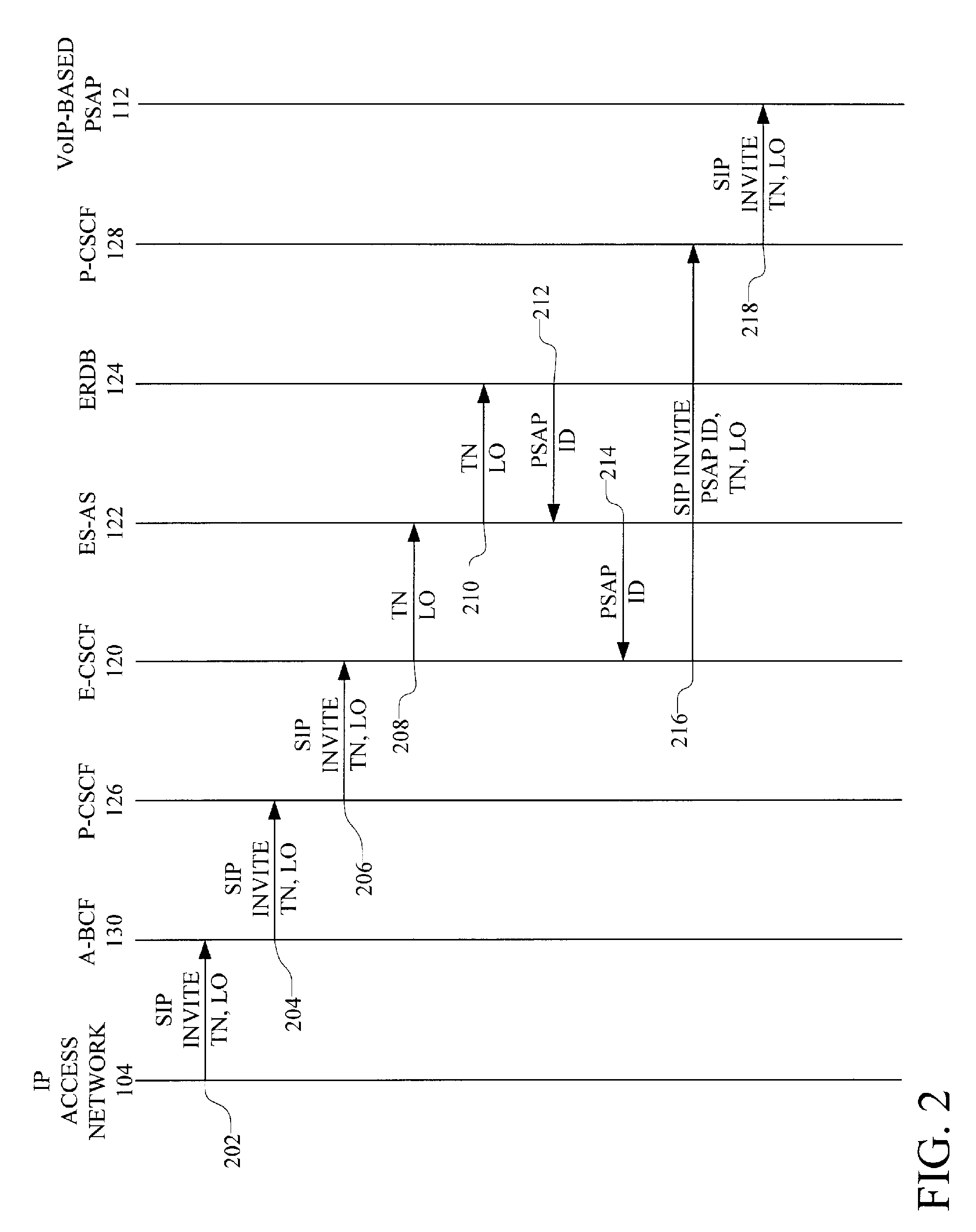Emergency services call delivery from a legacy communications device to a VOIP psap
a technology of emergency services and legacy communications, applied in the field of enhanced, can solve the problems of neither the current art nor the extant or proposed standards
- Summary
- Abstract
- Description
- Claims
- Application Information
AI Technical Summary
Benefits of technology
Problems solved by technology
Method used
Image
Examples
Embodiment Construction
[0018]FIG. 1 illustrates a communications network 100 wherein a VoIP-based emergency services network 102 in accordance with this invention operates. For purposes of describing the exemplary embodiment of this invention, emergency service processing in accordance with United States practice is described. One skilled in the art will understand how to adapt this invention to operate in the context of other countries after reviewing this specification.
[0019]In the United States (and Canada), the emergency services number is “9-1-1.” As is known in the art, 9-1-1 is not destination specific; that is, a call placed to 9-1-1 cannot be routed to a destination without knowing at least an approximation of the location of the calling party. The goal of an emergency services network, therefore, is to route an emergency services call to a public safety answering point (PSAP) local to the caller. A call taker at the local PSAP can then dispatch appropriate aid in a timely manner.
[0020]To this en...
PUM
 Login to View More
Login to View More Abstract
Description
Claims
Application Information
 Login to View More
Login to View More - R&D
- Intellectual Property
- Life Sciences
- Materials
- Tech Scout
- Unparalleled Data Quality
- Higher Quality Content
- 60% Fewer Hallucinations
Browse by: Latest US Patents, China's latest patents, Technical Efficacy Thesaurus, Application Domain, Technology Topic, Popular Technical Reports.
© 2025 PatSnap. All rights reserved.Legal|Privacy policy|Modern Slavery Act Transparency Statement|Sitemap|About US| Contact US: help@patsnap.com



